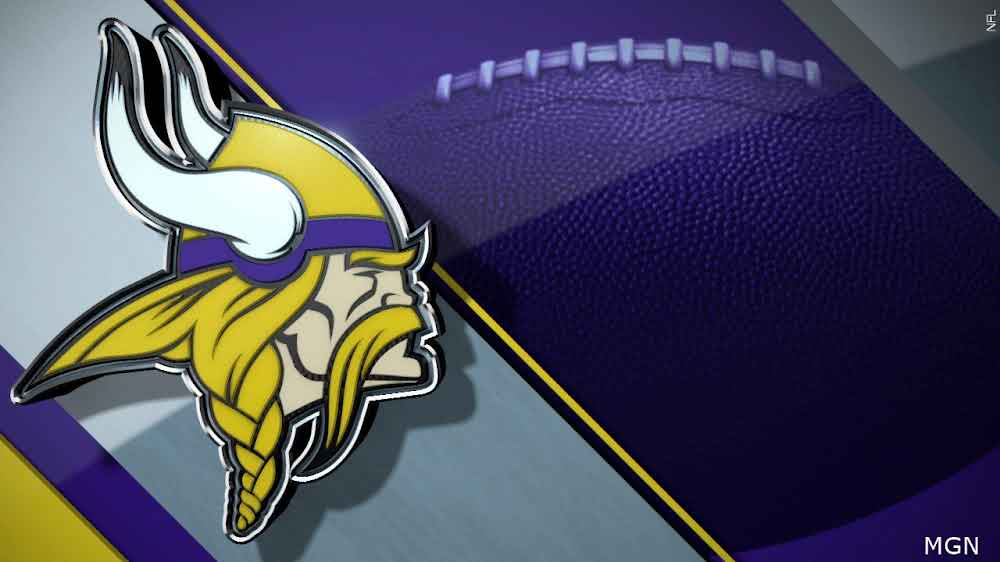 A combination of medical care, extra padding and sheer human toughness kept Vikings tight end T.J. Hockenson on the field against the New Orleans Saints.
A combination of medical care, extra padding and sheer human toughness kept Vikings tight end T.J. Hockenson on the field against the New Orleans Saints.
The Vikings had just finished practicing on Friday, Nov. 10, when tight end T.J. Hockenson arrived at his locker and began unwrapping the pad that was protecting the two ribs he had injured five days earlier in Atlanta.
He winced while making eye contact with a reporter, who asked if he was OK, as if any NFL player is truly OK nine games into a season.
“It’s part of the deal,” said Hockenson.
Indeed, it is. Here is a snapshot of what it takes to get the human body from one NFL game to the next:
The Vikings trailed Atlanta 21-13 and were facing third-and-8 from the Falcons’ 38 with 4:10 left in the third quarter when Joshua Dobbs rolled right and threw 8 yards to Hockenson, whose right rib cage was instantly crushed by the helmet of a 6-1, 202-pound missile named Jeff Okudah.

From there, Hockenson turned his busted body over to modern sports science. Tyler Williams, the team’s vice president of player health and performance, and Uriah Myrie, head athletic trainer, stage a weekly “injury clinic” after games to assess injuries, manage pain, reduce swelling, formulate individual plans for healing and try as best they can to project a player’s availability before the coaches start game-planning for the next opponent the next day.
“Some of these guys kind of go through minor car crashes,” Williams said. “It’s like getting thrown down the stairs and saying, ‘How quickly can I come back?’”
Modern sports science can fast-track the timeline with a wide variety of treatment procedures, including water therapy, manual therapy and nutritional strategies for joints, bones and soft tissue. Player safety, however, is the top priority, Williams insisted.
“It’s great to have a head coach who is so supportive of the NFL and our team specifically when it comes to player health and safety,” Williams said. “As players prepare their bodies for the demands of the NFL, it becomes an intricate balance of preparing them physically and tactically to be at their best every week.
“Being a former player, Kevin thinks through the lens of player health performance and, ‘Hey, what’s best for our players?’ It doesn’t matter if it inconveniences us as a staff, them as coaches, us as an organization. And I think ownership falls right in line with that as well. It’s amazing to be part of an organization that puts the emphasis on player health performance because not all of them do.”
On the morning of Monday, Nov. 6, the coaches met with Williams and Myrie to discuss injuries.
 “T.J.’s was, ‘Hey, he’s really sore, we’re going to have to limit contact, but our expectation and the way T.J. is talking, he should be able to play against the Saints,’” said offensive coordinator Wes Phillips. “There wasn’t a concern about making it worse or puncturing anything. And T.J. was determined to play. And he practiced well with a red jersey on so no one would touch him.
“T.J.’s was, ‘Hey, he’s really sore, we’re going to have to limit contact, but our expectation and the way T.J. is talking, he should be able to play against the Saints,’” said offensive coordinator Wes Phillips. “There wasn’t a concern about making it worse or puncturing anything. And T.J. was determined to play. And he practiced well with a red jersey on so no one would touch him.
“Knowing that early in the week, that’s huge from a game-plan standpoint because there are some plays you really want T.J. on the field. I personally couldn’t imagine even raising my arms to catch a ball, let alone taking another hit, so what T.J. did was pretty amazing.”
Mike Parson, the team’s first-year equipment manager, outfitted Hockenson with protective gear that allowed him to practice on a limited basis. Hockenson was listed as questionable on the final injury report Friday, Nov. 10, but had told reporters he was playing. Period.
And play he did. Through shots to the ribs, falls and flips, and even a roundhouse punch from Saints cornerback Alontae Taylor that missed the ball and hit Hockenson in the, yep, you guessed it.
Leave a Reply